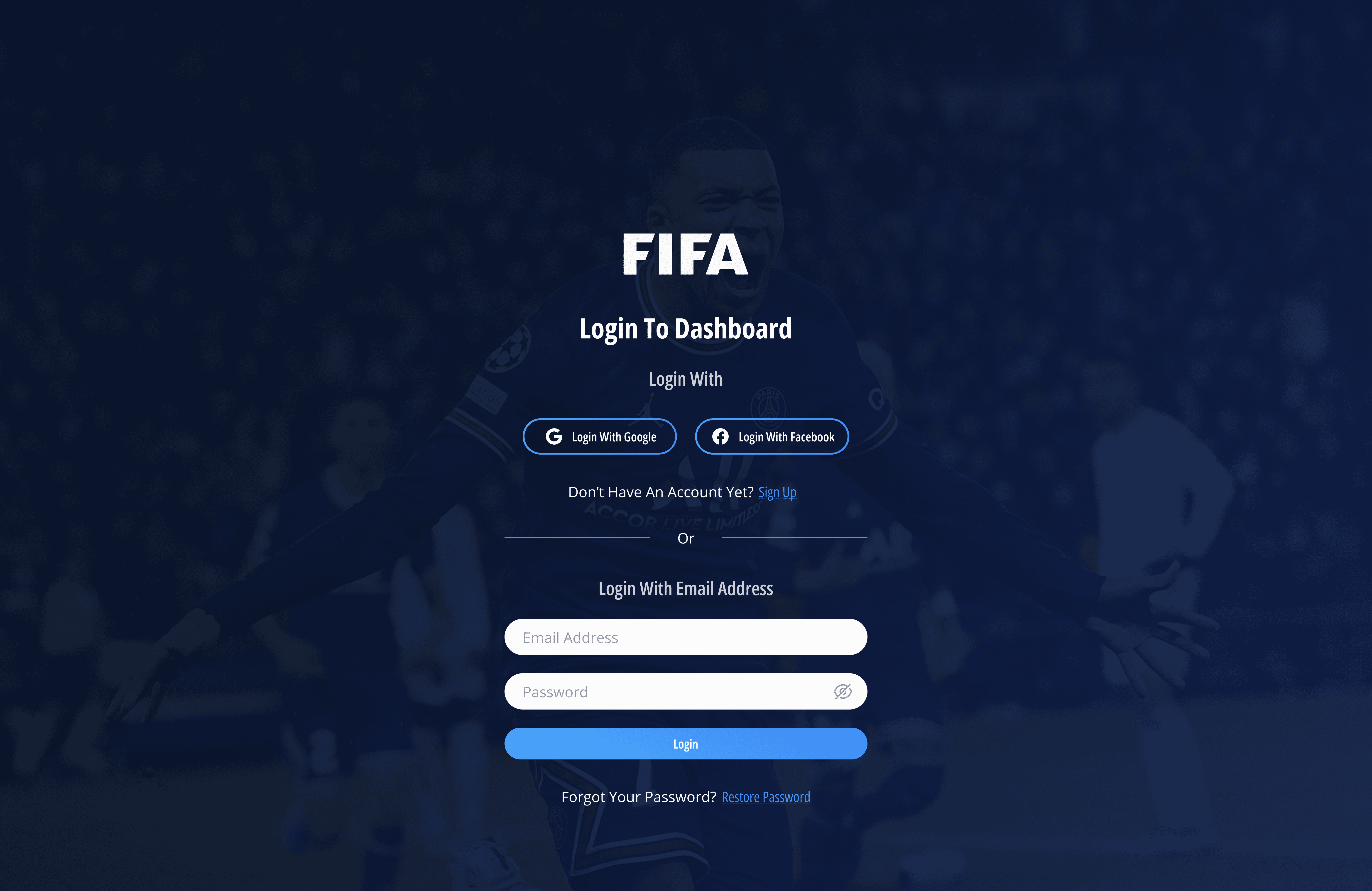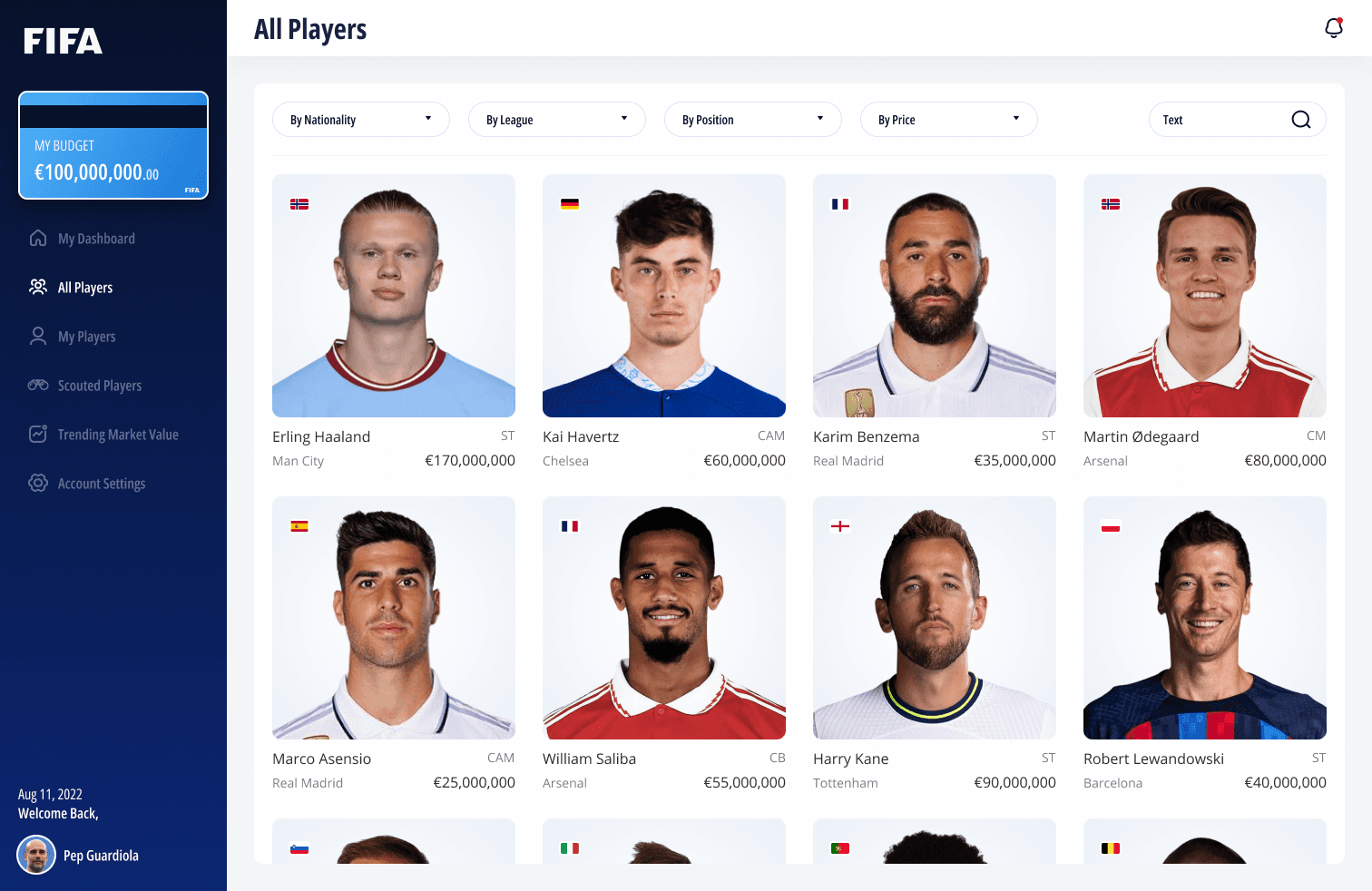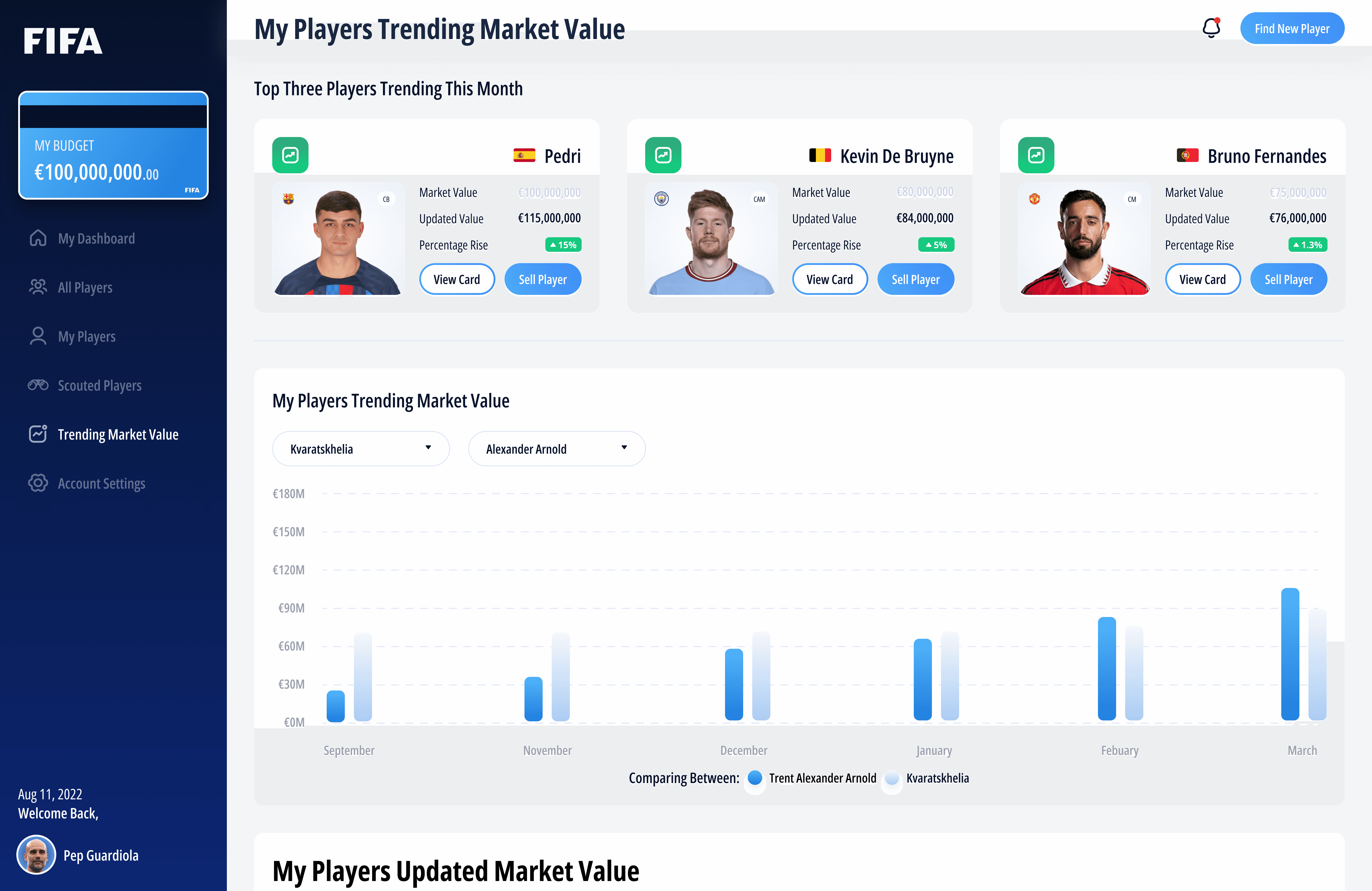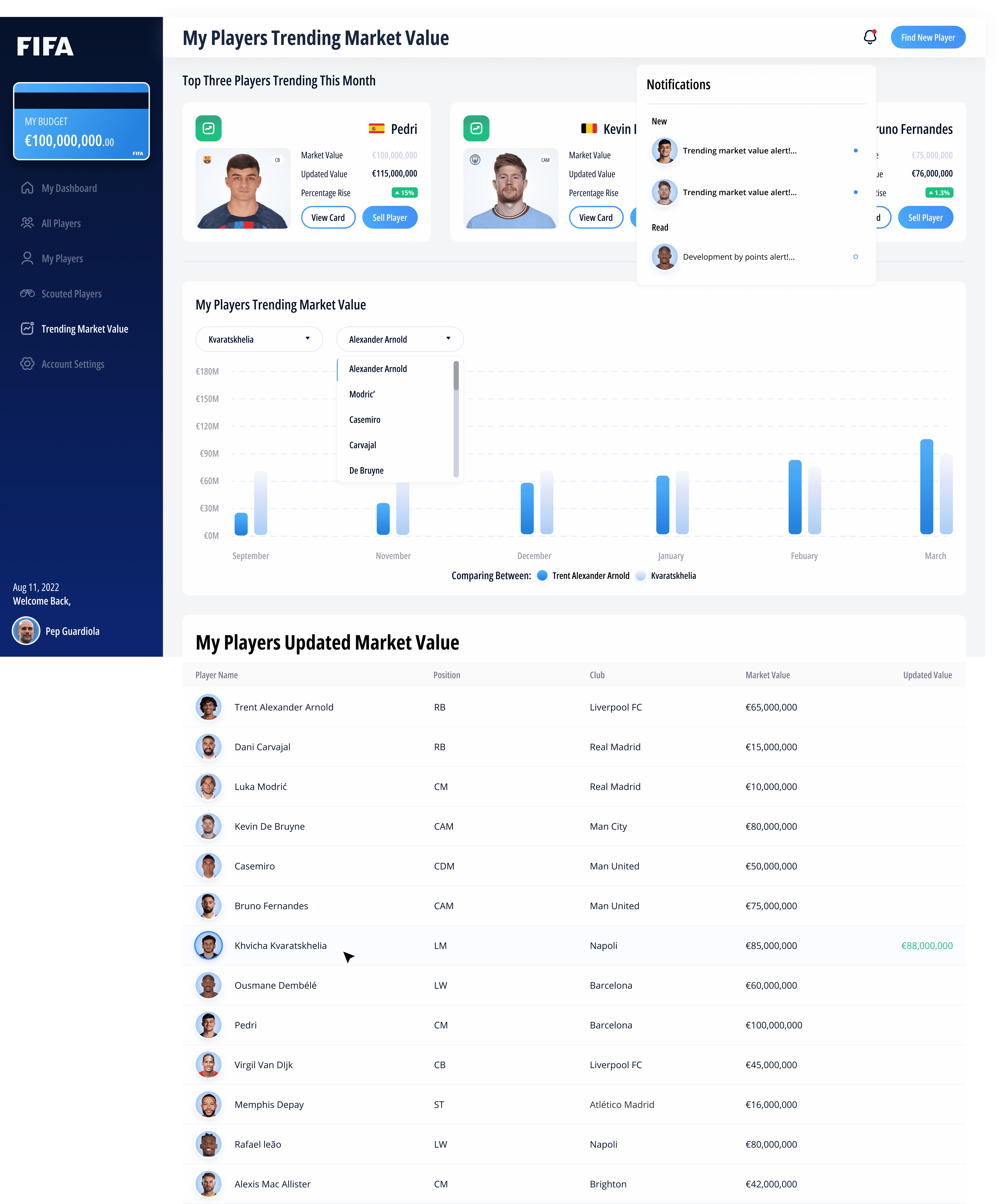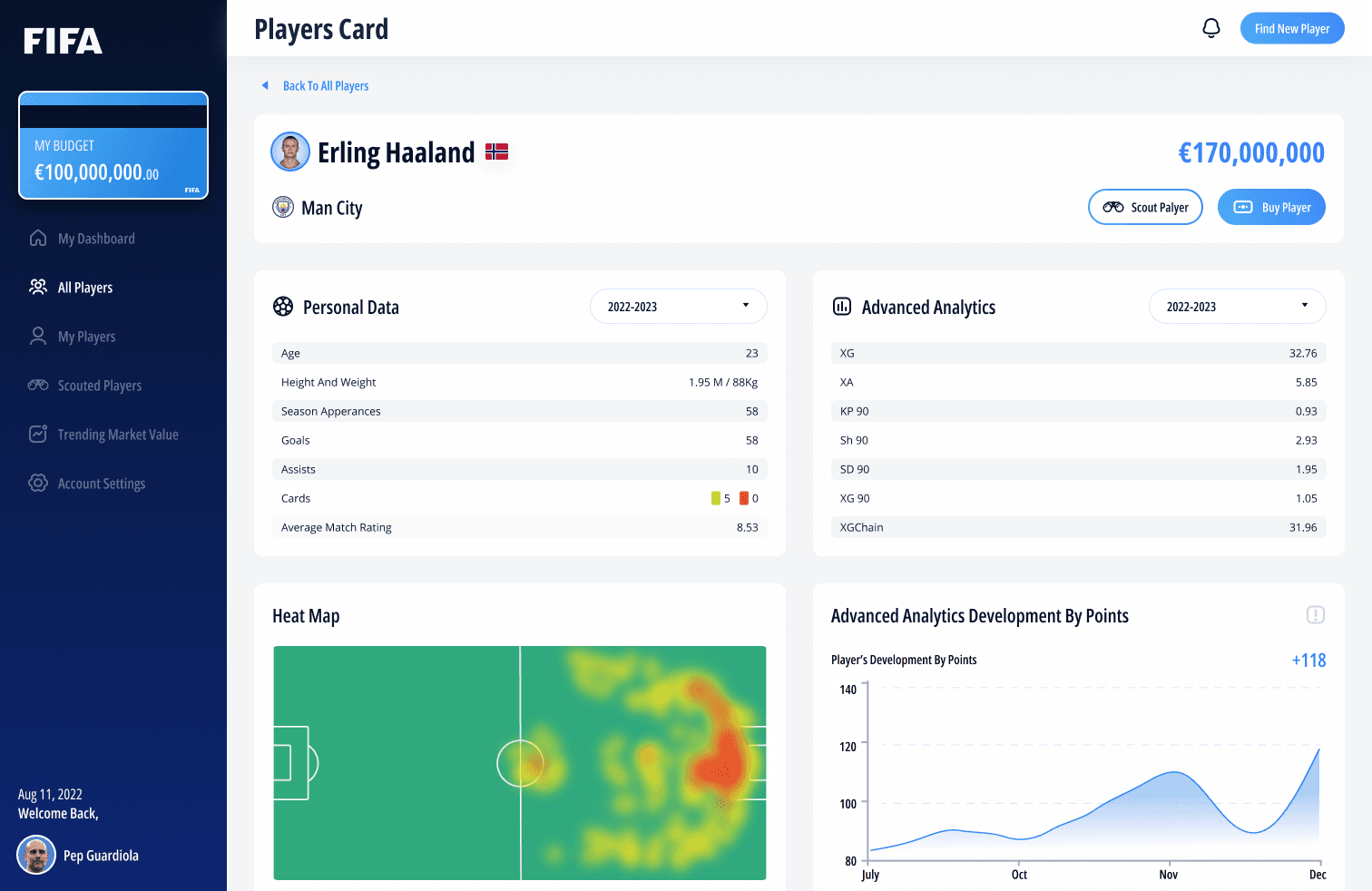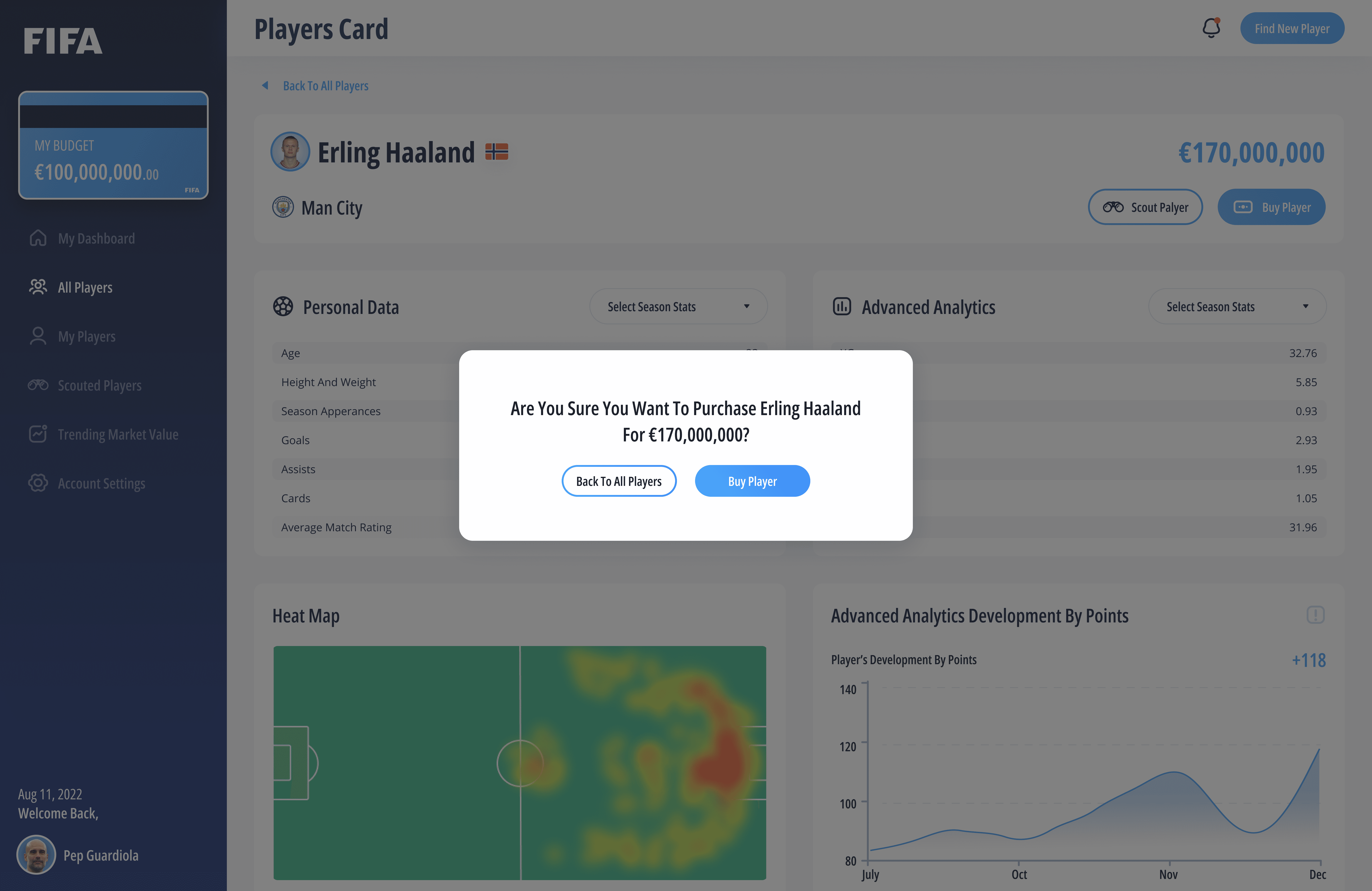Designing a dashboard for one of the world best games.
Designing a dashboard for one of the world's best games
Industry
Industry
SaaS
SaaS
Design process & role
Design process & role
Conceptual exploration
Conceptual exploration
Duration
Duration
3 Months
3 Months


Challenge breakdown
Challenge breakdown
FIFA Ultimate Team players constantly struggle to make informed decisions when buying and selling players, as data is scattered across multiple sources, hard to compare, and rarely visualized in a way that supports quick strategic decisions.
The goal of this project was to design a player performance and market analytics dashboard that brings clarity to complex data, highlights key metrics like ROI, trends, and value fluctuations, and ultimately empowers users to act with confidence. The challenge lay in translating raw, overwhelming data into an intuitive, insight driven experience without sacrificing depth for usability.
FIFA Ultimate Team players constantly struggle to make informed decisions when buying and selling players, as data is scattered across multiple sources, hard to compare, and rarely visualized in a way that supports quick strategic decisions.
The goal of this project was to design a player performance and market analytics dashboard that brings clarity to complex data, highlights key metrics like ROI, trends, and value fluctuations, and ultimately empowers users to act with confidence. The challenge lay in translating raw, overwhelming data into an intuitive, insight driven experience without sacrificing depth for usability.
Solution and impact
Solution and impact
Designed a dashboard to turn scattered FIFA player data into clear, actionable insights for faster, smarter transfer decisions. The solution focused on data clarity, trend analysis, and ROI prediction.
Designed a dashboard to turn scattered FIFA player data into clear, actionable insights for faster, smarter transfer decisions. The solution focused on data clarity, trend analysis, and ROI prediction.
Success metrics
Success metrics
Time to insight: from data to decision.
Decision confidence: user reported confidence post analysis.
Engagement: return visits tracking market trends.
Time to insight: from data to decision.
Decision confidence: user reported confidence post analysis.
Engagement: return visits tracking market trends.
Research
To validate the concept, I ran a survey among FIFA players to uncover current workflows, pain points, and unmet needs. Key findings: 84% wanted a centralized dashboard to track player data and market prices. 72% needed deeper performance analytics with tools to manage budgets and purchases. These insights shaped the product focus on clarity, decision making speed, and ROI prediction, ensuring the design solved real user frustrations.
Research
To validate the concept, I ran a survey among FIFA players to uncover current workflows, pain points, and unmet needs. Key findings: 84% wanted a centralized dashboard to track player data and market prices. 72% needed deeper performance analytics with tools to manage budgets and purchases. These insights shaped the product focus on clarity, decision making speed, and ROI prediction, ensuring the design solved real user frustrations.
UX concept
The UX strategy was driven by research insights showing players needed faster decisions, better visibility into trends, and clearer analytics. The platform flow was designed around three key principles: Start with clarity: The dashboard surfaces top metrics (revenue, best performers, market trends) so users immediately see what matters most. Progressive detail: Clicking a player reveals a deep detailed analytics (performance, market value trends, heat maps) only when needed, reducing cognitive overload. Seamless action: Buying a player or managing your team happens directly within context, minimizing friction and decision time. Each decision mapped back to KPIs like time to insight and decision confidence, ensuring the UX wasn’t just functional, but impact focused.
UX concept
The UX strategy was driven by research insights showing players needed faster decisions, better visibility into trends, and clearer analytics. The platform flow was designed around three key principles: Start with clarity: The dashboard surfaces top metrics (revenue, best performers, market trends) so users immediately see what matters most. Progressive detail: Clicking a player reveals a deep detailed analytics (performance, market value trends, heat maps) only when needed, reducing cognitive overload. Seamless action: Buying a player or managing your team happens directly within context, minimizing friction and decision time. Each decision mapped back to KPIs like time to insight and decision confidence, ensuring the UX wasn’t just functional, but impact focused.
Final design
Final design
